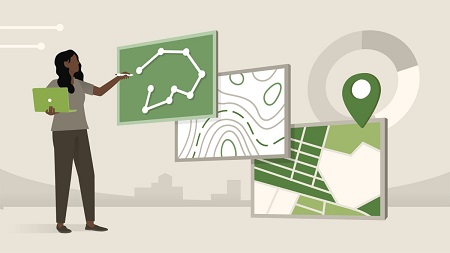
English | MP4 | AVC 1280×720 | AAC 44KHz 2ch | 0h 59m | 696 MB
Millions of organizations around the world are using Geographic Information Systems (GIS) to make maps that communicate, perform analysis, share information, and solve challenging problems. In this course, Jennifer Harrison, President of TeachMeGIS and a consultant in the GIS field for nearly 30 years, shows you the value of using GIS to solve problems and helps you to master its intricacies. Jennifer shares how to create maps, stack layers, and evaluate spatial relationships. She explains the essential elements of a GIS and describes attribute tables and how they are used in map display and analysis. Jennifer goes over raster data, as well as lidar data and how it can be used to make a 3D model of real-world features. She also covers ways to source data and import it into GIS. Finally, Jennifer goes over enterprise and mobile versions of GIS. After this course, you’ll be able to comprehend the basics of GIS, recognize its core concepts, and get started with GIS programs.
Table of Contents
Introduction
1 Thinking spatially
1. Understanding GIS
2 Solving spatial problems
3 Finding and accessing GIS
4 Recreating the world on a map
5 Specifying location
6 Essential map comprehension
2. GIS Core Concepts
7 More than digital maps
8 Layers of data stacked together
9 The data behind the map
10 Images, surfaces, and raster layers
11 LiDAR Creating a 3D model
3. Geospatial Analysis
12 Asking a map questions
13 Evaluating spatial relationships
14 Analysis with imagery and surfaces
4. Spatial Data Sources
15 Spatial data is everywhere
16 Creating your own GIS data
5. GIS as a Spatial Platform
17 Enterprise-level GIS
18 Mobile and web GIS
Conclusion
19 Putting it in practice
Resolve the captcha to access the links!